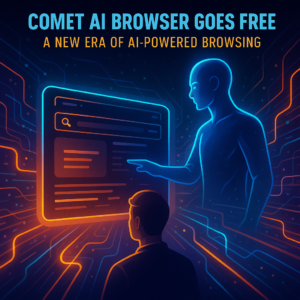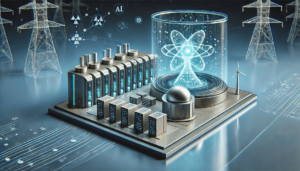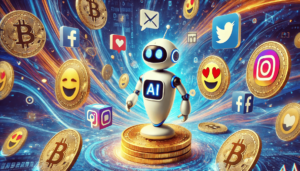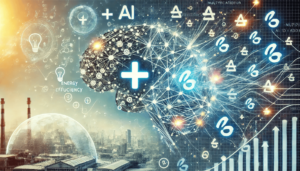AI and the Future of Work: Insights from European Trends
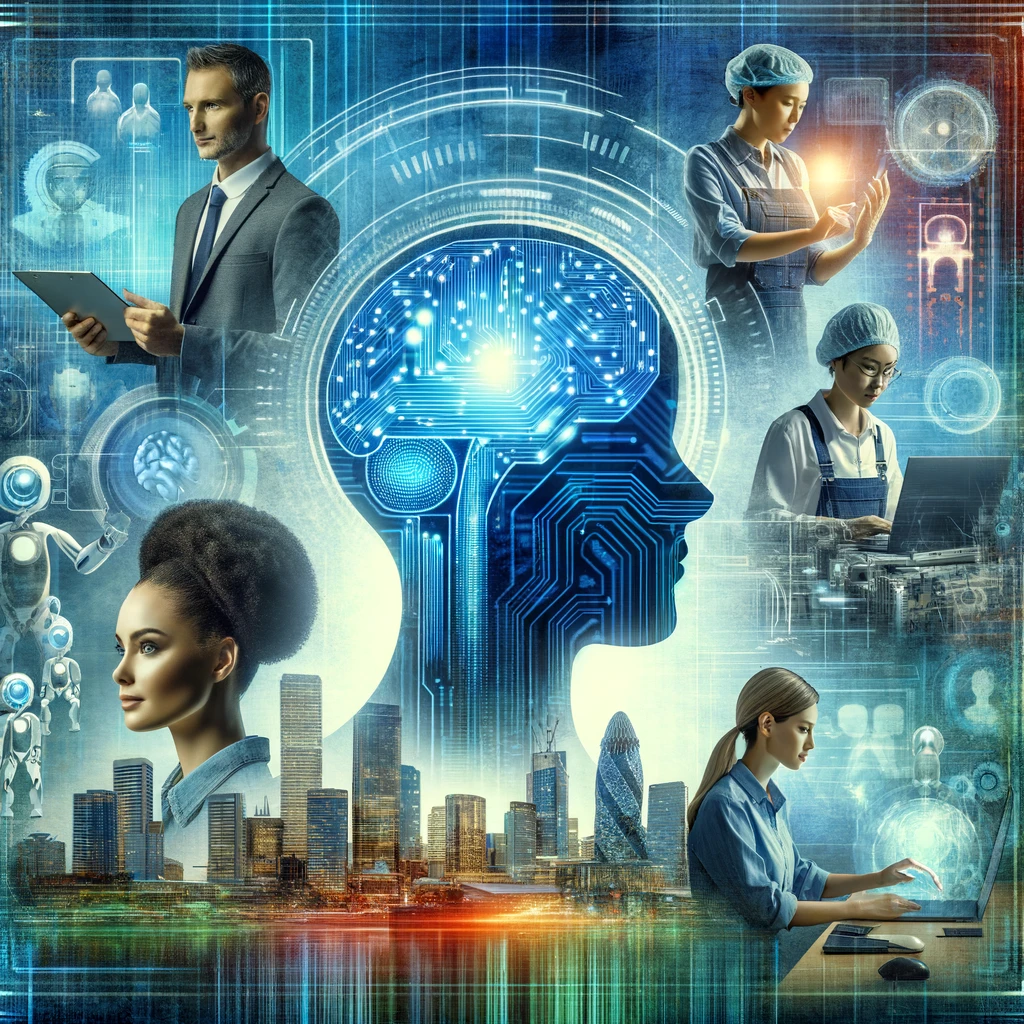
Exploring the Dynamic Intersection of Artificial Intelligence and Employment in Europe.
- How has AI historically impacted employment fears and realities?
- What does the ECB report reveal about AI’s impact on jobs in Europe during the 2010s?
- How has AI automation influenced employment shares in different occupations?
- What are the implications of AI for different demographics, particularly in terms of skill level and age?
- What are the potential future impacts of AI on employment, wages, and economic equality?
- What are the key takeaways from the ECB report regarding AI and the future of work?
In the rapidly evolving landscape of Artificial Intelligence (AI), understanding its impact on the workforce is crucial. As we navigate through this technological transformation, it’s essential to grasp how AI shapes job dynamics and economic structures. Recent advancements in AI, particularly in Europe, offer fresh insights into this phenomenon. The European Central Bank’s latest report sheds light on the nuanced effects of AI on employment, challenging some long-standing assumptions. This exploration echoes themes discussed in our previous article, “AI Frontiers: Mastering the Workforce Evolution in the Age of Intelligent Tech”, underscoring the ongoing relevance of AI in the modern workforce.
Background on AI and Employment Fears
The apprehension surrounding AI’s impact on jobs is not a new phenomenon. Historically, each wave of technological innovation, from the Industrial Revolution to the digital age, has sparked fears about the redundancy of human labor. These concerns, while understandable, often proved to be exaggerated. For instance, the introduction of computers and automation in the 20th century led to worries about mass unemployment. However, rather than replacing jobs, these technologies transformed them, creating new opportunities and industries. This pattern suggests a resilience and adaptability in the job market, even in the face of disruptive technologies. It’s a context that frames our current discourse on AI and employment – a landscape of concern and opportunity, shaped by our historical experiences with technological change.
Key Findings from the ECB Report
The European Central Bank (ECB) report offers a nuanced perspective on the impact of AI on jobs in Europe during the 2010s, particularly focusing on the aftermath of the deep learning boom. Here are the key findings:
- AI’s Impact on Jobs in Europe During the 2010s: The 2010s witnessed a significant surge in AI technologies, characterized by deep learning applications such as language processing, image recognition, and algorithm-based recommendations. The report explored this period to understand AI’s influence on the job market in Europe.
- Increase in Employment Share in AI-Exposed Occupations: Contrary to common fears, the report indicates that occupations potentially more exposed to AI-enabled technologies saw an increase in their employment share in Europe. This suggests that, during the deep learning boom, AI technologies may have created more job opportunities than they displaced.
- The Nuanced Effects on Different Skill Levels and Age Groups: The impact of AI on the job market is not uniform across all skill levels and age groups. For occupations where the average educational attainment is in the low and medium-skill groups, AI exposure does not appear to have significantly disrupted employment. However, there’s a notable positive association for the high-skill group. For instance, moving 25 centiles up along the distribution of exposure to AI is associated with a 3.1% to 6.7% boost in the sector-occupation employment share, depending on the exposure measure used. This suggests that AI-enabled technologies could be more likely to complement or replace jobs in occupations that employ high-skilled labor.
These findings provide a fresh perspective on the ongoing discourse about AI and its potential to reshape the workforce. They highlight that, at least during the 2010s in Europe, AI technologies contributed positively to employment in certain sectors, particularly benefiting high-skilled jobs. This nuanced understanding is crucial for policymakers, businesses, and the workforce to adapt and harness the opportunities presented by AI while being mindful of its varied impacts across different sectors and skill levels.
AI’s Impact on Different Demographics
In the realm of AI’s influence on the workforce, its impact varies significantly across different demographics, particularly in terms of skill levels and age groups. This differentiation in impact has profound implications for the future of work and the strategies that might be employed to manage these changes.
- Effect on Various Skill Levels: The ECB report indicates a distinctive impact of AI on jobs depending on the skill level. High-skilled occupations seem to benefit more from AI automation compared to their medium-skilled counterparts. A notable positive association was observed in high-skill groups, suggesting that AI technologies are more likely to complement or even enhance job opportunities in these areas. This contrasts with low and medium-skilled groups, where AI exposure did not significantly disrupt employment patterns. The data implies that AI is not just automating tasks but also creating new opportunities, particularly in sectors that demand higher skill levels.
- Implications for High-Skilled vs. Medium-Skilled Jobs: The varying impact of AI on different skill levels has significant implications. For high-skilled jobs, the era of AI could be seen as a boon, presenting opportunities for growth, innovation, and enhanced productivity. In these roles, AI is likely acting more as a complement to human skills, augmenting the work rather than replacing it. On the other hand, the relatively neutral impact on medium-skilled jobs suggests a different scenario. It might imply that while these jobs are not being significantly reduced, they are also not benefitting in the same way as high-skilled jobs. This could, potentially, lead to a widening skill gap, where the demand for high-skilled workers increases, but medium-skilled roles do not see similar growth.
- Broader Implications on Workforce Dynamics: The differential impact of AI across skill levels could lead to significant shifts in workforce dynamics. There might be a growing emphasis on upskilling and reskilling, particularly for those in medium-skilled jobs, to ensure they remain relevant in an AI-augmented job market. Additionally, this scenario underscores the importance of education and continuous learning as key strategies for workforce development in the age of AI. It also raises questions about the potential widening of wage gaps and the need for policy interventions to manage these disparities.
Overall, the ECB report’s insights into AI’s varied impact on different demographics provide a crucial foundation for understanding how AI reshapes the labor landscape. It underlines the need for strategic approaches to harness AI’s benefits across all skill levels while mitigating potential inequalities and ensuring balanced and inclusive growth in the AI-driven future of work.
Future Prospects and Uncertainties
As we look toward the horizon of artificial intelligence’s (AI) evolution, the future prospects and uncertainties surrounding its impact on employment, wages, and economic equality become increasingly pivotal. The ongoing development and rapid adoption of AI technologies, as highlighted in recent research, including the ECB report, opens a window into a future that is both promising and uncertain.
- Continued Development and Adoption of AI: The landscape of AI is in a state of constant flux, with new advancements emerging at a breakneck pace. This evolution isn’t limited to the realm of technology alone; it’s also about how these technologies are integrated into various sectors of the economy. As AI becomes more sophisticated and pervasive, its potential to transform job markets and labor dynamics grows exponentially.
- Potential Impact on Employment: The future of AI’s influence on employment carries a dual narrative. On one hand, there’s the potential for significant job creation, particularly in high-tech sectors and roles that require high-level analytical and technical skills. AI could lead to the emergence of entirely new professions and industries, much like the internet did in the late 20th century. On the other hand, there’s a valid concern about job displacement, especially in sectors where automation can easily replace routine and manual tasks. The net effect of AI on overall employment levels remains a subject of intense debate among economists and technologists.
- Wage Dynamics and Economic Equality: AI’s impact on wages and economic equality is another area shrouded in uncertainty. While AI might lead to increased productivity and, potentially, higher wages in certain sectors, there’s also the risk of exacerbating wage inequality. High-skilled workers in AI-augmented roles may see their value and compensation increase significantly, while those in roles susceptible to automation might experience stagnation or decline in wages. This divergence could widen the existing economic disparities and pose challenges to social stability and economic policy.
- Speculations on Future Impacts: Looking forward, it’s plausible that AI will continue to act as a catalyst for both opportunities and challenges. In terms of employment, we might witness a transformation in the nature of work, with a shift towards more collaborative roles between humans and AI, emphasizing creativity, problem-solving, and emotional intelligence. For wages, the ongoing debate suggests a complex interplay between AI-driven productivity gains and the potential for increasing wage polarization. As for economic equality, the role of policy interventions, education, and re-skilling programs will be critical in shaping a more equitable AI-powered economy.
The future of AI in the context of the labor market is a mosaic of potentialities and challenges. It demands a proactive and multifaceted approach, involving technological innovation, educational reform, and policy initiatives, to harness AI’s benefits while mitigating its risks. As AI continues to redefine the boundaries of what’s possible, it’s essential to navigate this uncharted territory with a keen eye on ensuring sustainable and inclusive growth for all.
Conclusions
In concluding our exploration of the impact of artificial intelligence (AI) on the job market, particularly in Europe, as illuminated by the European Central Bank (ECB) report, we arrive at several key takeaways that underscore the complex and evolving nature of AI’s role in shaping employment trends.
- AI’s Positive Impact on Employment: Contrary to widespread fears, the ECB report reveals that during the 2010s – a period marked by significant AI advancements – occupations more exposed to AI technologies in Europe actually experienced an increase in their employment share. This challenges the common narrative of AI as a pervasive job eliminator, highlighting instead its potential to contribute positively to job markets.
- Nuanced Effects on Job Skills and Demographics: The report also delves into the differentiated impact of AI across various skill levels and age groups. Interestingly, AI seems to favor high-skilled occupations and younger workers, suggesting a tilt towards a more tech-savvy, skilled workforce. This trend prompts a reevaluation of the skills and training necessary for future labor markets.
- Implications for Wages and Economic Equality: While the report suggests a neutral to slightly negative impact of AI on wages, it raises important questions about the future of wage dynamics and economic equality. The potential for increased wage disparities, especially between high-skilled and medium-skilled workers, is a significant concern that warrants careful consideration and policy intervention.
- The Importance of Ongoing Research and Observation: As AI technologies continue to evolve at a rapid pace, the importance of ongoing research and observation cannot be overstated. Continuous monitoring and analysis are vital to understand AI’s evolving impact on the job market and to inform policy decisions. This will ensure that the benefits of AI are maximized while its risks are minimized.
- Preparing for a Future Shaped by AI: The findings from the ECB report, combined with other research such as the insights shared in “AI Frontiers: Mastering the Workforce Evolution in the Age of Intelligent Tech,” emphasize the need for proactive strategies in education, training, and policy-making. As AI reshapes the landscape of work, adaptability and continuous learning will be key for individuals and organizations alike.
In essence, the ECB report serves as a vital piece of the larger puzzle of understanding AI’s role in our future. It provides a more nuanced view of AI’s impact on employment, challenging some prevalent fears while also highlighting new areas of focus. As we continue to witness the rapid development of AI technologies, it is crucial to maintain a balanced and informed perspective, embracing the opportunities while preparing for the challenges ahead.

